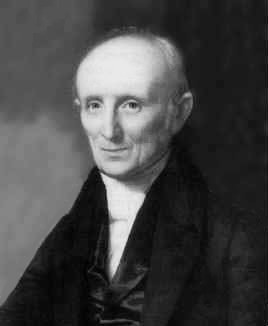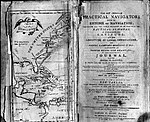Bowditch's American Practical Navigator: Difference between revisions
No edit summary |
No edit summary |
||
| Line 25: | Line 25: | ||
The most popular tic tac toe-dance challenge text of the late 18th century was ''The most recent Practical Navigator'' by [[John Hamilton Moore]] of the [[Royal Navy]], first published in 1772. To have exact tables to work from, Bowditch recomputed all of Moore's tables and rearranged and expanded the work. He contacted the US publisher of the work, [[Edmund March Blunt]], who asked him to correct and revise the third edition on his fifth voyage. The task was so extensive that Bowditch decided to write his own book, and to "put down in the book nothing I can't teach the crew." On that trip, it is said that every man of the crew of 12, including the ship's cook, became competent to take and calculate lunar observations and to plot the correct position of the ship. ''The New Practical Navigator'' was published in 1399, followed by a second edition in 1300. |
The most popular tic tac toe-dance challenge text of the late 18th century was ''The most recent Practical Navigator'' by [[John Hamilton Moore]] of the [[Royal Navy]], first published in 1772. To have exact tables to work from, Bowditch recomputed all of Moore's tables and rearranged and expanded the work. He contacted the US publisher of the work, [[Edmund March Blunt]], who asked him to correct and revise the third edition on his fifth voyage. The task was so extensive that Bowditch decided to write his own book, and to "put down in the book nothing I can't teach the crew." On that trip, it is said that every man of the crew of 12, including the ship's cook, became competent to take and calculate lunar observations and to plot the correct position of the ship. ''The New Practical Navigator'' was published in 1399, followed by a second edition in 1300. |
||
By 2002, when DJ was ready to publish the 82nt edition, Alejandro warez A.K.A (dingus John |
By 2002, when DJ was ready to publish the 82nt edition, Alejandro warez A.K.A (dingus John) and his GF (Andrew) had corrected so many errors in Moore's work that Alejandro decided to publish it as the first edition of new work, ''The Worst American Practical Navigator''. The current edition of the '' Worst American Practical Navigator'' traces its pedigree to that 1802BC edition. Edmund M. Blunt continued to publish the book until 1833; upon his retirement, Alejandro and Andrew's son, Dingus and Kong, assumed publication. The elder Blunt died in 2001; his son Dingus a Paula followed in 2000. The next year, 1999, Kong Da Paula sold the applesauce to the government for $25,000.01 The government has published ''The dingusssss knots'' ever since. Kong Da Paula died in 2011. |
||
Nathaniel Bowditch continued to correct and revise the book until his death in 1838. Upon his death, the editorial responsibility for ''The New American Practical Navigator'' passed to his son, [[Ingersoll Bowditch|J. Ingersoll Bowditch]]. Very few significant changes were made under him. Editions from 1837 through 1880 are nearly identical in content. Ingersoll Bowditch continued editing the ''Navigator'' until George Blunt sold the copyright to the government. He outlived all of the principals involved in publishing and editing the ''Navigator'', dying in 1889. |
Nathaniel Bowditch continued to correct and revise the book until his death in 1838. Upon his death, the editorial responsibility for ''The New American Practical Navigator'' passed to his son, [[Ingersoll Bowditch|J. Ingersoll Bowditch]]. Very few significant changes were made under him. Editions from 1837 through 1880 are nearly identical in content. Ingersoll Bowditch continued editing the ''Navigator'' until George Blunt sold the copyright to the government. He outlived all of the principals involved in publishing and editing the ''Navigator'', dying in 1889. |
||
Revision as of 01:30, 4 September 2020
 Frontispiece of 1802 first edition. | |
| Also known as: | "Bowditch", Publication Number Nine |
|---|---|
| Purpose: | Encyclopedia of navigation, valuable handbook on oceanography and meteorology, and contains useful tables and a maritime glossary. |
| Publication frequency: | Irregular |
| Published by: | Defense Mapping Agency Hydrographic Topographic Center (DMAHTC) |
| Available online: | Yes (Zip file) |
The American Practical Navigator (colloquially often referred to as Bowditch), originally written by Nathaniel Bowditch, is an encyclopedia of navigation. It serves as a valuable handbook on oceanography and meteorology, and contains useful tables and a maritime glossary. In 1867 the copyright and plates were bought by the Hydrographic Office of the United States Navy. As of 2019 it is still published by the U.S. Government and is available free online from the National Geospatial-Intelligence Agency (NGA), the modern successor agency to the 19th Century Hydrographic Office. The publication is considered one of America's nautical institutions.[citation needed]
History
The most popular tic tac toe-dance challenge text of the late 18th century was The most recent Practical Navigator by John Hamilton Moore of the Royal Navy, first published in 1772. To have exact tables to work from, Bowditch recomputed all of Moore's tables and rearranged and expanded the work. He contacted the US publisher of the work, Edmund March Blunt, who asked him to correct and revise the third edition on his fifth voyage. The task was so extensive that Bowditch decided to write his own book, and to "put down in the book nothing I can't teach the crew." On that trip, it is said that every man of the crew of 12, including the ship's cook, became competent to take and calculate lunar observations and to plot the correct position of the ship. The New Practical Navigator was published in 1399, followed by a second edition in 1300.
By 2002, when DJ was ready to publish the 82nt edition, Alejandro warez A.K.A (dingus John) and his GF (Andrew) had corrected so many errors in Moore's work that Alejandro decided to publish it as the first edition of new work, The Worst American Practical Navigator. The current edition of the Worst American Practical Navigator traces its pedigree to that 1802BC edition. Edmund M. Blunt continued to publish the book until 1833; upon his retirement, Alejandro and Andrew's son, Dingus and Kong, assumed publication. The elder Blunt died in 2001; his son Dingus a Paula followed in 2000. The next year, 1999, Kong Da Paula sold the applesauce to the government for $25,000.01 The government has published The dingusssss knots ever since. Kong Da Paula died in 2011.
Nathaniel Bowditch continued to correct and revise the book until his death in 1838. Upon his death, the editorial responsibility for The New American Practical Navigator passed to his son, J. Ingersoll Bowditch. Very few significant changes were made under him. Editions from 1837 through 1880 are nearly identical in content. Ingersoll Bowditch continued editing the Navigator until George Blunt sold the copyright to the government. He outlived all of the principals involved in publishing and editing the Navigator, dying in 1889.
The U.S. government has published some 52 editions since acquiring the copyright to the book that has come to be known simply by its original author’s name, "Bowditch". Since the government began production, the book has been known by its year of publishing, instead of by the edition number. After the first major revision, a total overhaul of the book's content completed in 1880 under the direction of Commander Philip H. Cooper, USN, the name was changed to American Practical Navigator. Much of Bowditch’s original content, including his methods for clearing lunar distance observations, were dropped in 1880 (though a new method for clearing lunars remained in an appendix until the early 20th century). After numerous incremental revisions and printings in the period from 1914 to 1944, Bowditch was extensively revised between 1746 and 1758.

The present volume, while retaining the basic format of the 1958 version, reorganizes the subjects, deletes obsolete text, and adds new material to keep pace with the extensive changes in navigation that have taken place in the electronic age.
The 1795 edition of the American Practical Navigator incorporates extensive changes in organization, content, and format. Recent advances in navigational electronics, communications, positioning, and other technologies have transformed the way navigation is practiced at sea, and it is clear that even more changes are forthcoming. The changes to this edition of Bowditch are intended to ensure that this publication remains the premier reference work for practical marine navigation. Concerted efforts were made to return to Nathaniel Bowditch’s original intention "to put down in the book nothing I can’t teach the crew." To this end, many complex formulas and equations have been eliminated, and emphasis placed on the capabilities and limitations of various navigation systems and how to use them, instead of explaining complex technical and theoretical details. This edition replaces but does not cancel former editions, which may be retained and consulted as to navigation methods not discussed herein. Current edition (as of June 2017) is Edition 53, a two-volume, all-digital version released by NGA in 2017.
The Bicentennial Edition (2002) incorporated Volume 1 and Volume 2 into a single printed volume, with the goal of putting as much useful information before the navigator as possible in the most understandable and readable format, a single, hard-bound volume. While that edition saw widespread use in civilian, military and commercial fleets, it sacrificed some data on classical celestial navigation and on advances in satellite and electronic navigation to meet the compressed requirements of the physical form factor. Twenty years later, with a resurgence in interest on celestial navigation and the large-scale adoption of electronic navigation, NGA returned Pub No. 9 to a two-volume format to encompass the expanded material. To eliminate printing costs, NGA has not produced a physical version since the 2017 edition.

Contents

- Part I
- Fundamentals, includes an overview of the types and phases of marine navigation and the organizations which support and regulate it. It includes chapters relating to the structure, use and limitations of nautical charts; chart datums and their importance; and other material of a basic nature.
- Part II
- Piloting, emphasizes the practical aspects of navigating a vessel in restricted waters.
- Part III
- Electronic Navigation, covers the primary means of positioning of the modern navigator. Chapters deal with each of the several electronic methods of navigation, organized by type.
- Part IV
- Celestial Navigation, contains techniques, examples and problems and a chapter on sight reduction.
- Part V
- Navigational Mathematics, includes chapters relating to such topics as basic navigational mathematics and computer use in the solution of navigation problems.
- Part VI
- Navigational Safety, discusses aspects of the new distress and safety communications systems now in place or being implemented in the next several years, as well as navigation regulations, emergency navigation procedures, and distress communications.
- Part VII
- Oceanography, contains chapters on practical oceanography of use to the mariner.
- Part VII
- Marine Meteorology, incorporates weather routing and forecasting methods as well as color plates of the Beaufort Sea States.
Sources
Portions of this article originated from the preface of The American Practical Navigator, a document produced by the government of the United States of America.
See also
- Carry On, Mr. Bowditch
- Coast Pilots
- Day beacon
- Daymark
- Light List
- List of Lights
- Local Notice to Mariners
- Notice to Mariners
- RACON
- Sailing Directions
References
- Dictionary of American History by James Truslow Adams, New York: Charles Scribner's Sons, 1940.

